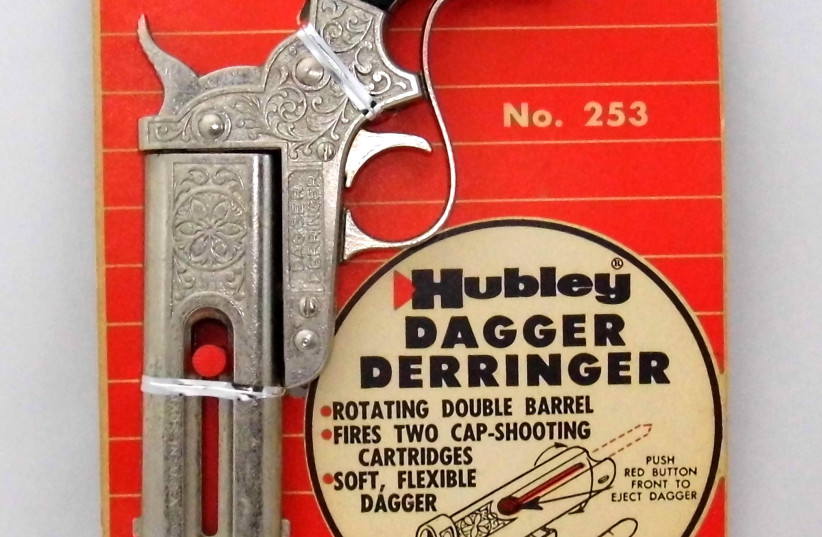The number of licensed guns that have been purchased by Israelis in recent months has skyrocketed due to the growing number of terror attacks and the easing by National Security Minister Itamar Ben-Gvir of criteria to have them approved.
But how will children be discouraged from finding these weapons and using them, causing tragic injuries and deaths. Besides locking them in a safe or closet, they can still be left around for a short time.
In a lab at Ohio State University that was made to look like a playroom, pairs of youngsters aged eight to 12 who participated in a study found a variety of toys and games to play with – as well as a mysterious file cabinet. Inside one of the drawers of the unlocked cabinet were two disabled 9-mm handguns.
As they played in the room, nearly all the children eventually found the guns. However. some of the children were much more likely to tell an adult they found a gun, less likely to touch the gun and less reckless if they did touch it. They were the children who had watched a one-minute gun safety video a week earlier.
The team headed by communication Prof. Brad Bushman published their findings in JAMA Pediatrics under the title “A Gun Safety Video Can Reduce Children’s Unsafe Behavior Around Real Guns: A Randomized Clinical Trial.”

The study, according to the authors, may be the first to randomly assign some children to watch a gun safety video to determine if it had a protective effect. “It was pretty remarkable to see that this one-minute video had such a powerful impact a week after the kids saw it,” said Bushman, who conducted the study with Sophie Kjærvik, one of his doctoral students. “Firearms are the leading cause of death in American children. These results point to a way that may help reduce the toll,” Kjærvik said.
Studying children and gun safety
The study included 226 children whose parents or guardians gave permission for their participation. They were tested in pairs of kids who knew each other, including siblings, cousins and friends. A week before the lab portion of the study, the children watched at their own homes one of two 60-second videos created especially for the study. Both videos were of the university’s police chief delivering a message in full uniform. Half of the participant pairs saw the chief in a car safety video, while the other half saw her in a gun-safety video
A week later the children came to the lab and were told they could play with any of the toys and games in the room for 20 minutes, which they did while the researchers and parents watched them from another room via a hidden camera. Out of the 226 children, 216 (96%) opened the drawers of the filing cabinet and found the guns, which were disabled but rigged with a device that counted how often the kids pulled the trigger. “Kids are naturally curious, so we were not surprised that they opened the drawers and found the guns,” Bushman said.
The researchers asked parents if they thought their kids would report the gun to adults and not touch the firearm. “That’s what most parents in our study thought their child would do,” Kjærvik said. “But that is not what happened.” Over half of the children (53%) touched the gun and fewer than a quarter (23%) told an adult. But the key finding was the difference between those who watched the gun safety versus the car safety video. Those who watched the gun safety video were more than three times more likely to tell an adult (34% vs. 11%) and less likely to touch a gun (39% vs. 67%).
Even those who did touch the gun were less reckless if they had watched the gun safety video. They held the gun for fewer seconds (42 versus 100 seconds), were less likely to pull the trigger (9% versus 30%) and pulled the trigger fewer times (four vs. seven times). “These are strong results, especially given that the video was so short and the children watched it a full week earlier,” Bushman said.
The researchers said the video may have been effective because it featured an authority figure – a police chief – in full uniform. Previous research has shown that younger children find authority figures in uniforms to be especially persuasive. In contrast, a firearm safety video by the pro-gun-owning National Rifle Association was found to be ineffective, perhaps because it featured a cartoon bird called Eddie Eagle rather than an authority figure, Bushman said.
Overall, the study provides a realistic and relatively easy way to help stem gun injuries and deaths among children, Kjærvik and Bushman said. “We recommend that adults teach children about gun safety and reduce their exposure to age-inappropriate media.”
